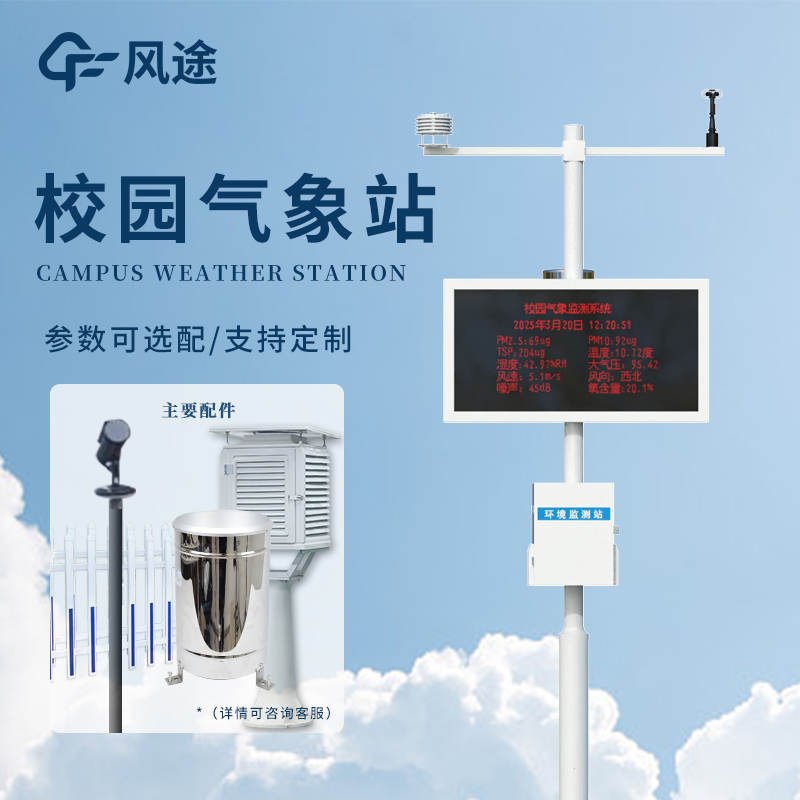Meteorological environment monitoring equipment supplier
Insist on doing high-precision customer favorite technology products
The history of the School weather station can be traced back to the early 20th century. At that time, some educationally developed countries began to attempt to establish simple meteorological observation points in schools, which were used to assist in the teaching of geography and science courses. With the development of science education, the School weather station has gradually become popular. It has evolved from simple manual observation tools into professional equipment with automation and digitization functions.
The School weather station is composed of various devices. The sensor is the core component, which is used to monitor meteorological elements such as wind speed, wind direction, and rainfall amount, and can obtain the meteorological information on campus in real-time. The data collector collects the data monitored by the sensors and conducts preliminary processing and storage. It usually has functions such as meteorological data collection, real-time clock, and timed storage. The transmission module is responsible for transmitting the data in the data collector to the monitoring platform, and various communication methods such as wired connection and local area network connection can be adopted. The power supply system generally has multiple options such as mains power, direct current, and solar power supply systems. The bracket and protective box are used to install and fix various sensors and devices. They have good stability and wind resistance, and protect electronic devices such as the data collector and the transmission module. Display devices such as LED display screens can display the meteorological data on campus in real-time, which is convenient for teachers and students to view.
It adopts sensor network technology. Through the collaborative work of multiple sensors, it realizes comprehensive and real-time monitoring of various meteorological elements on campus, improving the accuracy and representativeness of meteorological data. The data collection and storage technology endows it with the capabilities of high-speed data collection and large-capacity storage, enabling it to quickly and accurately collect a large amount of meteorological data and store it for a long time. The data analysis and processing technology uses big data analysis technology and artificial intelligence algorithms to analyze and mine the collected meteorological data, and obtain information such as the trends and changes of the campus meteorological conditions. The communication technology supports various communication methods to ensure that the data can be stably and reliably transmitted to the monitoring platform, realizing remote monitoring and data sharing. The automatic control technology realizes functions such as automatic observation, automatic recording, and automatic transmission, reducing manual intervention and improving work efficiency and data accuracy. The visualization display technology uses intuitive forms such as charts and maps to visually display the meteorological data, enabling teachers and students to have a clearer and more convenient understanding of the campus meteorological conditions.
